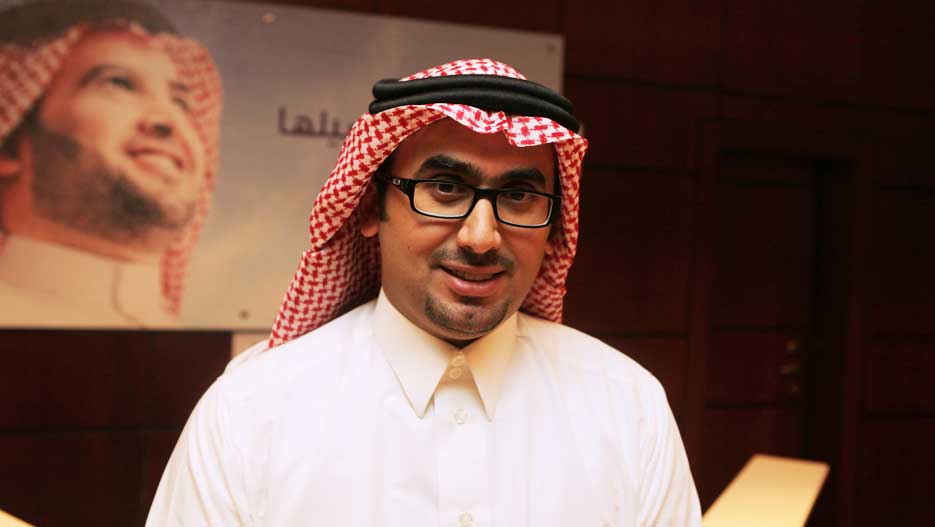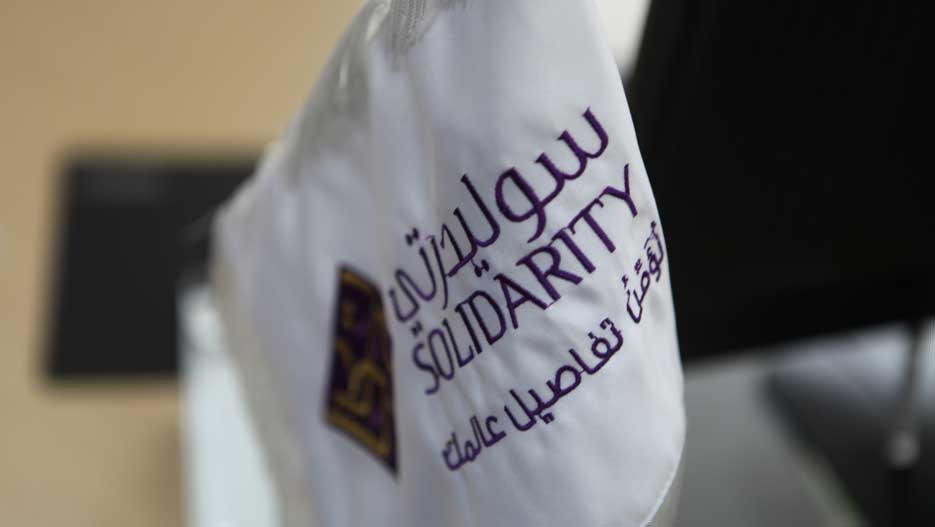Saudi Insurance Market: Industry Challenges and Opportunities
Bader Saad Al Shaya, VP Marketing and Sales of Solidarity Takaful
Previously there were about 90 insurance companies; now there are around 35 and all of them are licensed and controlled. Lots of major steps have been taken in terms of regulations and in terms of controlling the market.
Interview with Bader Saad Al Shaya, VP Marketing and Sales of Solidarity Takaful

The Saudi Arabian insurance industry has emerged as one of the fastest-growing insurance markets in the world, with tremendous growth rates of 20% in 2013. There is a lot of potential for the industry. For example, compulsory insurance products have recently been introduced, such as health insurance, and this has had a big impact on the sector. So how does the Saudi insurance market compare with other markets globally, including developed markets? How is the insurance market in Saudi Arabia structured?
Previously there were about 90 insurance companies; now there are around 35 and all of them are licensed and controlled.
Well, in fact, there is more control compared to before 2004. Previously there were about 90 insurance companies; now there are around 35 and all of them are licensed and controlled. Lots of major steps have been taken in terms of regulations and in terms of controlling the market. It’s obvious to those working in the Saudi insurance market that it is now driven by the compulsory products (motor third party insurance and the compulsory medical insurance), but some contributions are being made to the total gross written premiums (GWP) by other products. So that’s a start, and the industry is slowly developing, step by step. The main drivers here are the compulsory products, as I said, the medical and motor insurance. We would like to impose more compulsory products and are waiting to be able to do this so that we can re-activate, or even activate, the other products such as property insurance or some of the liability insurance and general accident insurance products.
Which segment of the insurance market do you predict will be the future growth driver and which segment is currently the most lucrative one?
If we are talking about segments, I would say that the SME segment has still not been penetrated as much as we had expected, or as much as the economists would like it to be. There is therefore a lot of potential in this segment across all the products. If we are talking about the insurances lines of business, I would say that in savings and protection, penetration if the whole gross written premiums is still very low and not really sufficient yet. That’s an indicator of huge potential for this product.
What do you think will be the growth rate for this line of business?
For the savings and protection product, growth is currently at 4-5%, and I think it will gradually go up to perhaps 10-12%, but this will require a lot of effort and a lot of awareness campaigns directed at the general public to raise their awareness of this kind of solution.
For the savings and protection product, growth is currently at 4-5%, and I think it will gradually go up to perhaps 10-12%
What are the main challenges facing the industry?
Well, that’s a very good question. The Saudi market is facing so many challenges. Perhaps one of the main ones is society’s awareness of insurance, which is still not supporting the industry overall. Another challenge is to shift the market from being price-driven to being service- and quality-driven. It is currently purely price-driven, which will affect the services and will increase price competition, which, at the end of the day, is not very healthy. A third thing is that GWP is being driven by the two compulsory products, as I said, of medical and motor insurance. One of the challenges is to diversify the GWP and to let the other products contribute to GWP. This will stabilise the market and make it very healthy.
How do you assess the Saudi insurance market in terms of existing legislation and regulatory framework, and what types of initiatives and regulations would you welcome to the market?
The regulatory framework in Saudi Arabia is currently still in its infancy, but there has been a lot of improvement and a lot of obvious, major steps are being taken. It is becoming more controlled and the confidence between the general public and the industry is becoming more solid. It is becoming easier to identify who is qualified to work in the insurance industry in terms of either companies or individuals who are helping to regulate the market properly. The regulator has recently initiated a lot of activities that we appreciate, such as studying market awareness, starting to do some research and imposing some activities that suit the industry as they help to activate or to enhance the relationship between society and the industry. What we would welcome from the regulator is if they can impose lots of compulsory products other than the medical, motor and medical malpractice; that will be helpful for the market.
We see that this market has one specific feature, which is that there are a lot of companies who are competing for the market: there are more than 30 licensed insurance companies, along with a further 66 businesses offering insurance support services, such as brokers, etc. So now, everybody is talking about consolidation. What do you think about consolidation in the industry?
Personally, I believe that consolidation will occur in the Saudi insurance market in the near future. If we look at the history of the insurance industries all over the world, the same scenario has happened elsewhere in many places. I believe consolidation is healthy from an economic point of view, and is therefore practically a must – an inevitable result.
What is your strategy to cope with consolidation?
Well, we don’t currently have a specific strategy in place, but it will definitely be on our roadmap as something to consider in the future. A healthy portfolio is an attractive investment and is definitely going to be on our roadmap in the future.
Certain figures show that the penetration rate in Saudi Arabia is much lower than in the UAE, where it was 1.8% in 2011, and in Bahrain, where it was 1.4%; globally it is 6.6%. Comparatively, the Saudi insurance market has not been penetrated at all. What is your strategy to increase these figures?
The issue here is the density of the premiums: how much individuals in Saudi Arabia are willing to spend on insurance products. We’re still on the lower side for this, so one of the challenges is to increase their awareness of insurance products. By increasing the general public’s awareness, penetration will naturally increase compared to the current rate. As I said, the amount that individuals are currently spending on insurance solutions or products is not sufficient. People still view it as an extra expense, not as a need. It’s not seen as something you have to have with you or put on your list. In order to increase penetration for the insurance GWP, we need to increase product awareness, impose lots of compulsory products and then we can see effective movement. Yet we can see year after year, GWP is in fact improving overall.
How would you characterise the competitive strategy of Solidarity Takaful and what are your goals for 2014 and 2015?
We are trying to push our positioning to be more service driven and to focus more on quality rather than quantity. Our goal in 2014/15 is to serve the client or be beside them in the far areas of Saudi Arabia – Saudi Arabia is a large country and we are sure there is a need everywhere in Saudi Arabia. Our plan includes a roadmap for expanding our sales points and we’re going to open some sales points in the near future.
What are the challenges you are facing? You are one of the latecomers to the industry, and of course entering a new market is not always profitable and you can lose money for the first few years. So these must be some of the financial challenges you must be facing, but what are the other challenges and how are you trying to overcome them?
Well, one of the challenges is as a newcomer is brand awareness, to let the general public know about you. The other things is that a lack of awareness in society is limiting our plans and strategy for expansion. The high demand for certain products and certain insurances solutions is one of the challenges; we want to promote other solutions and packages for certain sectors or individuals, but as yet, the whole demand is driven towards the compulsory products. We would like to promote other products and solutions like public liability, like property insurance, etc., but this is one of the challenges.

What is your long-term vision for the market? You entered the market with something in mind for your business, so what is your vision? And what gives you the confidence that you can achieve it?
Our vision and long-term view for us in the insurance market in Saudi in particular is to be the number one takaful provider. The market here, and society here, would like to have insurance products that are Shariah-compliant, i.e. that are compliant with Islamic law. The first thing that most people here ask is whether a product is compliant with Shariah, or is it conventional insurance? This is actually one of the challenges we are facing as well. They are more into the takaful products than the conventional products. Our long-term vision is to be the number one provider as we are now applying the takaful model, technically, from A – Z.
Can you explain a little what you mean by “Shariah-compliant”? The law in Saudi Arabia is based on Shariah, so you cannot in fact offer a product that is in conflict with the law. Surely this means that when it comes to financial products, everything must technically be Shariah-compliant? For example, under Shariah law, interest is banned and there are contractual agreements marking compliance with the law. How is takaful different to the other, Shariah-compliant products that are being offered by other insurance companies?
Well, there is a technical part of the model of takaful, which is a cooperative system, in practice, which governs how you can divide the contributions and put them in certain funds and conduct the steps of takaful. In principle, it is the same thing, but in practice, there is a bit of confusion about this in society and most people specifically want to choose takaful products.
So do you want to the market leader for providing takaful insurance?
Yes, that’s our vision.